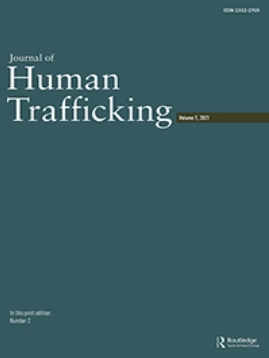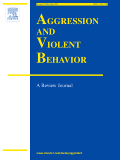What is IDD?
Intellectual and developmental disabilities (IDD) represents an umbrella term for neurodevelopmental disorders that begin in early childhood and affect learning, behavior, and social and physical development (Centers for Disease Control and Prevention [CDC], 2020a). About 1 in 6 children in the United States have at least one IDD, including attention-deficit/hyperactivity disorder (ADHD), autism spectrum disorder, and learning disabilities that impact academic performance. Signs of these disabilities first appear before age 22 and include challenges with intellectual functioning (i.e., learning, reasoning, and problem solving) and adaptive behavior (i.e., everyday conceptual, social, and practical skills; American Association on Intellectual and Developmental Disabilities, n.d.).
What Evidence Is There That Youth with IDD Experience Sex Trafficking?
Credible estimates for how many minors in the United States experience trafficking do not currently exist, and, to date, no studies have sought to estimate the number of youth with IDD who experience trafficking every year in the United States (Franchino-Olsen et al., 2020). However, some studies examining sex trafficking victimization have investigated how youth with certain IDDs compare to their peers without disabilities among identified or self-reported persons who have experienced trafficking. In a small study, Reid (2016) examined the case files at a social services agency in Florida and found that 15 out of 54 minor victims of sex trafficking were assessed as having an intellectual disability. In these cases, girls with IDD were more likely to have the following risk factors compared to girls without IDD: running away, risky internet behavior, and difficulty discerning between a potential romantic partner and a trafficker. In a larger study sample of 344 youth, Chisolm-Straker and colleagues (2018) found that homeless youth who received special education services were at an increased risk of experiencing sex trafficking. Moreover, additional research found youth with cognitive disabilities to be 1.3 to 4.9 times more likely than their peers without cognitive disabilities to experience sex trafficking (de Vries et al., 2020; Franchino-Olsen et al., 2020). For youth with disabilities and other marginalized identities, such as identifying as a sexual minority, the risk of experiencing any kind of sexual violence increases (Jaffray, 2020).
What Do We Know About Inclusive Sex Trafficking Prevention?
The risk of sex trafficking among youth with IDD and/or other disabilities is an emerging research area, alongside recent efforts to prevent and increase awareness of minor sex trafficking via programming and educational curricula. It is critical to ensure that efforts (campaigns, curricula, etc.) aimed at preventing sex trafficking via community and school programs are inclusive of and accessible to youth with IDD. Inclusion refers to encouraging people with disabilities to participate in everyday social, educational, and health activities alongside their peers without disabilities (CDC, 2020). Accessible programming means providing accommodations to ensure a compatible learning environment for students with disabilities (Hsiao et al., 2019). Sex trafficking prevention for people with disabilities can be informed by recent research about the inclusivity of community-level intimate partner and family violence prevention and intervention programs (Robinson et al., 2021; Stern et al, 2020). Additionally, sex trafficking prevention education based in schools must address the needs of youth with IDD, especially given the longstanding history of inclusion of students with IDD in public schools (U.S. Department of Education, 2020).
In the report Human Trafficking in America’s Schools, the U.S. Department of Education recommended that schools develop comprehensive prevention programs that target students, staff, and parents to increase awareness of the existence and dynamics of minor sex trafficking (U.S. Department of Education, 2015). In response, several states passed legislation to require the incorporation of sex trafficking prevention into secondary school health curriculum (New Jersey General Assembly, 2019; North Carolina General Assembly, 2015). Unfortunately, little is known about how such legislation applies to children in restricted special education settings and whether school polices affect their access to the general health curriculum. It is also unclear whether school-based prevention programs that have been developed are inclusive of the needs of youth with IDD in terms of technology, instruction, engagement, and messaging. As such, more policies, programming, and research is required to ensure students with IDD are able to access developmentally appropriate curricula for sex trafficking prevention in secondary schools.
What Are Some Potential Solutions to Promote Inclusive Sex Trafficking Prevention?
- Develop a Comprehensive Systems Approach. Rather than adapt a deficit-oriented approach in which a youth’s IDD diagnosis is the reason for their risk, service professionals should emphasize the failure of systems to properly connect youth with IDD to much-needed resources. For instance, youth with IDD make up a significant proportion of the juvenile justice and child welfare systems (Child Welfare Information Gateway, 2018; Goldkind, 2014). Similarly, youth involved in these systems have a higher risk of experiencing sex trafficking (Anderson, et al., 2017; Cimino et al., 2017). With these overlaps, agencies should review intake and assessment processes to determine how the needs of youth with IDD are acknowledged and incorporated into sex trafficking prevention or intervention services.
- Engage Key Partners in Prevention. Although the sex trafficking prevention literature is limited, recommended practices underscore that meaningful partner engagement is critical to the implementation of such programming. In Rothman and colleagues’ pilot study of a dating violence prevention program for youth with autism, the authors organized an advisory board consisting of self-advocates with autism, service providers, and a content expert, and incorporated their feedback into the curriculum (Rothman et al., 2020). Additionally, when delivering sex trafficking prevention education in schools, parents/caregivers are essential partners to ensure that youth with IDD have the support to reinforce knowledge and skill acquisition at home.
Though many gaps still remain at the intersection of sex trafficking prevention and meeting the needs of youth with IDD, focusing our efforts on creating inclusive and accessible policies and programs is essential to adequately protect and reach vulnerable minors. The significant physical and mental health consequences of sex trafficking requires a coordinated service response, particularly for youth with IDD who may have limited access to resources geared toward reducing the risk of experiencing or re-experiencing sex trafficking.
Resources on IDD
Center for Victim Research – Human Trafficking Victims with Disabilities or Mental Illness (https://ncvc.dspacedirect.org/bitstream/item/1054/CVR_Biblio_Trafficking_508.pdf)
CDC – Sexual Violence and Intimate Partner Violence among People with Disabilities (https://www.cdc.gov/violenceprevention/sexualviolence/svandipv.html)
Elevatus Training (https://www.elevatustraining.com/)
Resources on Sex Trafficking Awareness and Prevention
Polaris Project (https://polarisproject.org/)
HEAL Trafficking (https://healtrafficking.org/)
NCCASA – Human Trafficking Prevention Curriculum Matrix (https://nccasa.org/human-trafficking-prevention-curriculum-matrix/)
Key Takeaways
- Due to economic, educational, health, and social disparities, youth with intellectual and developmental disabilities (IDDs) may be more vulnerable to experiencing sex trafficking compared to their peers without such disabilities
- Schools implementing sex trafficking prevention must consider issues of inclusivity and accessibility in their programming
- Responsive systems (e.g., consistent screening and assessment) and partner engagement (e.g., involvement of self-advocates with IDD) are critical to inclusive sex trafficking prevention
References
American Association on Intellectual and Developmental Disabilities (AAIDD). N.d. Definition of intellectual disability. https://www.aaidd.org/intellectual-disability/definition
Anderson, V. R., England, K., & Davidson, W. S. (2017). Juvenile court practitioners’ construction of and response to sex trafficking of justice system involved girls. Victims & Offenders, 12(5), 663-681. https://doi.org/10.1080/15564886.2016.1185753
Centers for Disease Control and Prevention. (2020a). Facts about developmental disabilities. https://www.cdc.gov/ncbddd/developmentaldisabilities/facts.html
Centers for Disease Control and Prevention. (2020b). Disability inclusion. https://www.cdc.gov/ncbddd/disabilityandhealth/disability-inclusion.html
Child Welfare Information Gateway. (2018). Addressing the needs of young children in child welfare: Part C—Early intervention services. Washington, DC: U.S. Department of Health and Human Services. https://www.childwelfare.gov/pubPDFs/partc.pdf
Chisolm-Straker, M., Sze, J., Einbond, J., White, J., & Stoklosa, H. (2018). A supportive adult may be the difference in homeless youth not being trafficked. Children and Youth Services Review, 91, 115-120. https://doi.org/10.1016/j.childyouth.2018.06.003
Cimino, A. N., Madden, E. E., Hohn, K., Cronley, C. M., Davis, J. B., Magruder, K., & Kennedy, M. A. (2017). Childhood maltreatment and child protective services involvement among the commercially sexually exploited: A comparison of women who enter as juveniles or as adults. Journal of Child Sexual Abuse, 26(3), 352-371. https://doi.org/10.1080/10538712.2017.1282575
De Vries, I., Kafafian, M., Goggin, K., Bouchard, E., Goldfarb, S., & Farrell, A. (2020). Enhancing the identification of commercial sexual exploitation among a population of high-risk youths using predictive regularization models. Child maltreatment, 25(3), 318-327. https://doi.org/10.1177%2F1077559519889178
Franchino-Olsen, H., Silverstein, H.A., Kahn, N.F., & Martin, S.L. (2020). Minor sex trafficking of girls with disabilities. International Journal of Human Rights in Healthcare, 13(2), 97-108. https://doi.org/10.1108/IJHRH-07-2019-0055
Franchino-Olsen, H., Chesworth, B. R., Boyle, C., Rizo, C. F., Martin, S. L., Jordan, B., … Stevens, L. (2020). The prevalence of sex trafficking of children and adolescents in the United States: A scoping review. Trauma, Violence, and Abuse. https://doi.org/10.1177/1524838020933873
Goldkind, L. (2014). Protective webs: exploring a role for school social workers on behalf of delinquent youths. Journal of Evidence-Based Social Work, 11(4), 337-349. https://doi.org/10.1080/10911359.2014.897103
Hsiao, F., Burgstahler, S., Johnson, T., Nuss, D., & Doherty, M. (2019). Promoting an accessible learning environment for students with disabilities via faculty development (Practice Brief). Journal of Postsecondary Education and Disability, 32(1), 91-99. https://eric.ed.gov/?id=EJ1217448
Jaffray, B. (2020). Experiences of violent victimization and unwanted sexual behaviours among gay, lesbian, bisexual and other sexual minority people, and the transgender population, in Canada, 2018. Juristat: Canadian Centre for Justice Statistics, 1-27. https://www.proquest.com/docview/2443867303
New Jersey General Assembly. (2019). Child Trafficking Awareness for School Districts. In Senate Bill A-1428/S-2653 (P.L.2019, c.189). https://www.njleg.state.nj.us/2018/Bills/A1500/1428_R2.HTM
North Carolina General Assembly. (2015). Amend Qualifications/Practice of Counseling. In Senate Bill 279/S.L. 2015-279. http://www.ncga.state.nc.us/Sessions/ 2015/Bills/Senate/PDF/S279v6.pdf
Reid, J. A. (2016). Sex trafficking of girls with intellectual disabilities: An exploratory mixed-methods study. Sexual Abuse, 30(2), 107–131. https://doi.org/10.1177/1079063216630981
Robinson, S., Frawley, P., & Dyson, S. (2021). Access and accessibility in domestic and family violence services for women with disabilities: Widening the lens. Violence Against Women, 27(6–7), 918–936. https://doi.org/10.1177/1077801220909890
Rothman, E. F., Bair-Merritt, M., & Broder-Fingert, S. (2020). A feasibility test of an online class to prevent dating violence for autistic youth: A brief report. Journal of Family Violence, 1-7. https://doi.org/10.1007/s10896-020-00194-w
Stern, E., van der Heijden, I., & Dunkle, K. (2020). How people with disabilities experience programs to prevent intimate partner violence across four countries. Evaluation and Program Planning, 79, 101770. https://doi.org/10.1016/j.evalprogplan.2019.101770
U.S. Department of Education. (2015). Human trafficking in America’s schools. 1–14. https://safesupportivelearning.ed.gov/sites/default/files/HumanTraffickinginAmericasSchools.pdf
U.S. Department of Education. (2020). IDEA—45 years later. https://sites.ed.gov/idea/idea-45-years-later/




